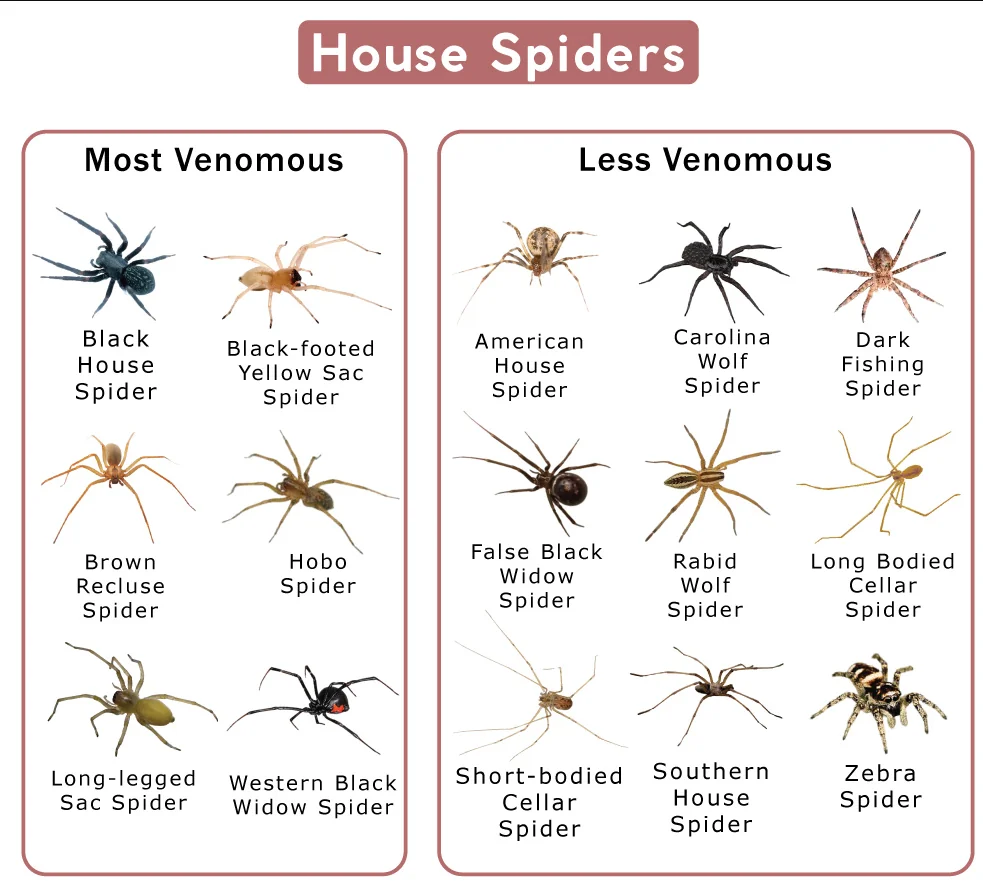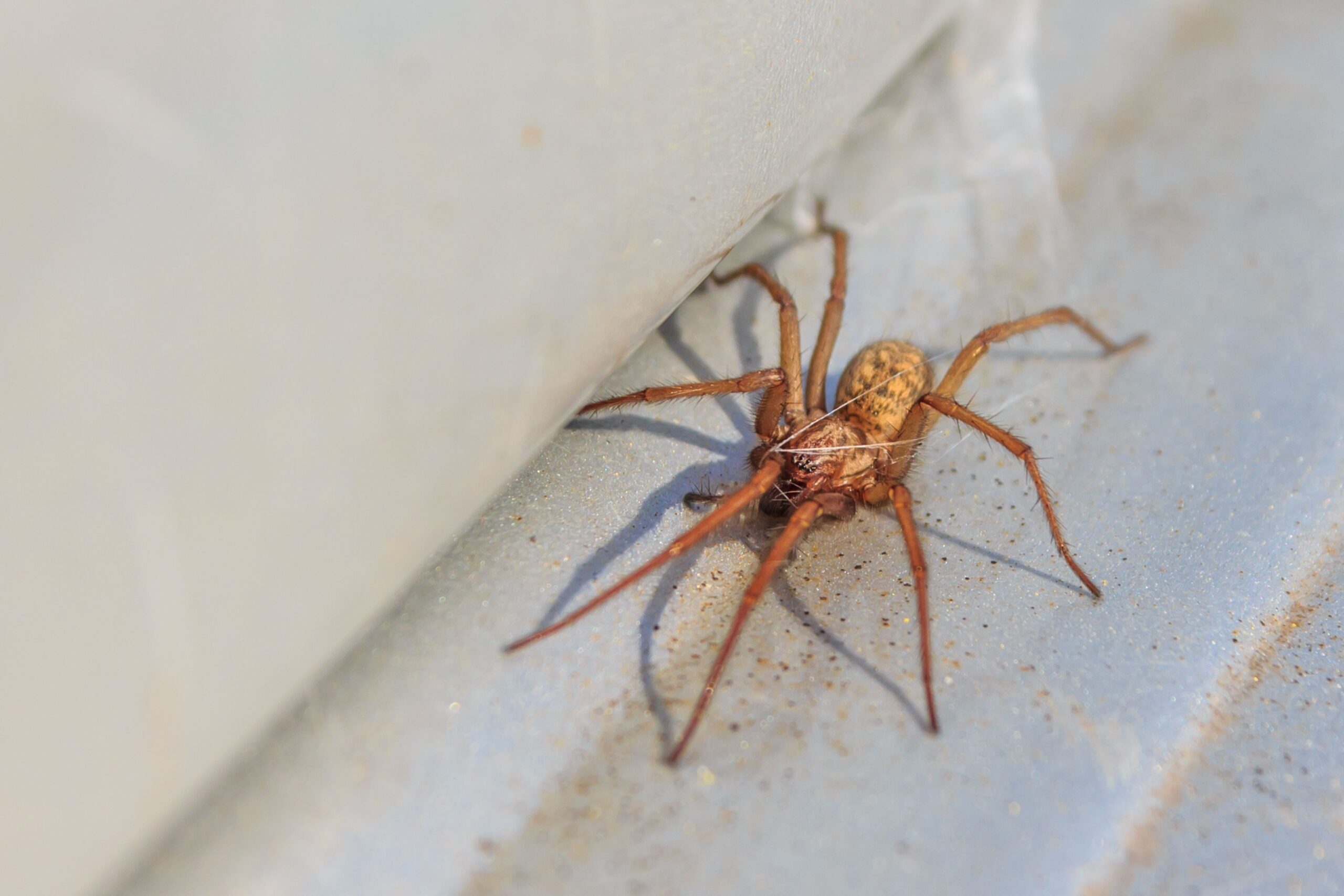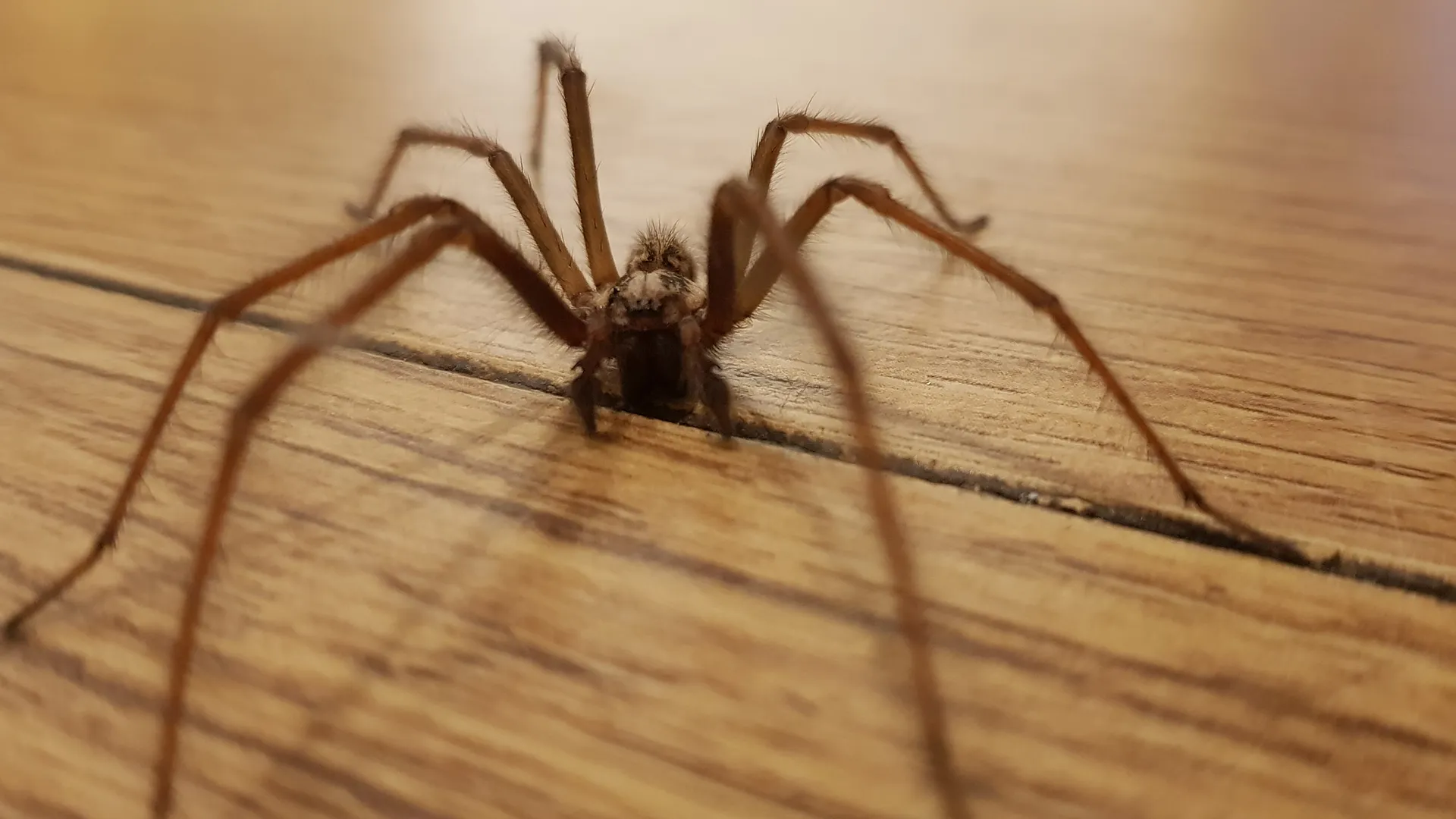Spider Treatments in Florida:
Exterminator Services for Apopka, Plymouth, and Zellwood
Florida’s warm climate and lush environment create an inviting home for people—and, unfortunately, for many kinds of spiders. Although most spiders are beneficial in that they help control insect populations, an overabundance of arachnids in or around your living space can cause unease and disrupt daily life. For residents and businesses in Apopka, as well as nearby areas like Plymouth and Zellwood, seeking professional spider exterminator services can keep unwelcome eight-legged guests from taking over. This service page explores the reasons spiders thrive in Florida, the most frequent species property owners may confront, and the steps involved in a comprehensive spider treatment plan. With the right balance of identification, targeted techniques, and ongoing prevention, you can maintain a spider-free environment while still enjoying Florida’s natural wonders.
Florida’s Climate and Spider Activity

- Mild Winters
Many regions rely on prolonged freezing periods to limit spider populations. In Florida, winter temperatures rarely drop low enough to significantly reduce spider activity. This means spiders can continue hunting and breeding throughout most of the year, allowing them to develop robust populations if not managed early. - High Humidity and Rainfall
Spiders gravitate to areas rich in insects, which often appear in large numbers when conditions are damp and warm. Florida’s frequent rain showers foster a steady supply of bugs for spiders to feed upon. Additionally, plentiful vegetation around homes provides numerous nesting or web-building spots for spiders to hide in during the day. - Year-Round Foraging Opportunities
Whereas colder climates force arthropods into dormancy for several months, Florida’s near-constant warmth encourages insect activity. Spiders thriving on these insects never truly face a severe off-season, so they can establish larger webs and produce multiple egg sacs across the year. - Expanding Residential Spaces
Growing regions like Apopka introduce more buildings, landscaping, and yard features that inadvertently create ideal spider habitats. Exterior lighting that attracts moths and flies, overgrown shrubs, or small openings in siding can all encourage spiders to remain close to human dwellings. - Minimal Natural Slowdowns
While some spiders may briefly reduce activity in cooler spells, Florida’s typical winter rarely lasts long enough to disrupt them substantially. This uninterrupted life cycle means even a small number of spiders left unchecked can swiftly multiply, occupying sheds, garages, or dark corners inside homes.
Common Spiders in Florida
- Common House Spiders
Often found in corners of ceilings or between windows and blinds, these small to medium-sized spiders spin messy, irregular webs. Though non-aggressive and relatively harmless to humans, their rapid reproduction can lead to unsightly webs around light fixtures or in neglected areas. - Wolf Spiders
Recognizable by their robust, hairy bodies, wolf spiders typically do not build webs. Instead, they hunt insects on the ground, moving swiftly around lawns, patios, or indoors if they find an entry point. Large wolf spiders can be intimidating, though bites typically occur only if the spider is threatened and has limited escape options. - Black Widow Spiders
Known for a shiny black body with a distinctive red hourglass mark on the abdomen, black widows prefer dark, sheltered sites like wood piles, shed corners, or undersides of outdoor furniture. Their venomous bite can be medically significant, although they tend to retreat when confronted. Avoiding piles of debris or old boxes in cramped sheds can help reduce black widow hiding spots. - Brown Widow Spiders
Similar to black widows but with an orange or yellow hourglass and a mottled tan or brown color, brown widows create strong, messy webs in concealed corners. While their venom is considered less potent than that of a black widow, caution is still advised. They often inhabit yard clutter, under patio chairs, or around mailbox posts. - Brown Recluse Spiders
Brown recluse sightings in Florida can occur, although they are less common in many coastal areas. They have a violin-shaped marking on their cephalothorax. Their bite can cause serious tissue reactions and requires prompt medical attention. Brown recluses often hide in infrequently disturbed closets, boxes, or attics. - Orb-Weaver Spiders
This group includes several species that spin large, circular webs in gardens or between tall shrubs. While orb-weavers appear dramatic (some are quite large), they are generally beneficial and non-aggressive, controlling insect populations outdoors. Nonetheless, their webs can be a nuisance if woven across walkways or doorways.

Why Seek Spider Treatments
- Overwhelming Web Presence
Discovering multiple webs strung across corners, eaves, or behind furniture suggests a high spider density, which can limit comfort in your living or workspace. In certain spaces—like basements, garages, or storage rooms—spider webs can gather dust and create a sense of disarray. - Potential Bites
Most spiders are harmless, yet more venomous species (like black widows or brown recluses) do inhabit Florida. Accidental bites might occur when people reach into dark corners, rummage through old boxes, or put on shoes stored in a poorly cleaned area. Although serious incidents are uncommon, the risk can spark worry among residents. - Fear or Phobias
Arachnophobia, or the intense fear of spiders, is relatively prevalent. Even if the spiders present are non-venomous, their presence can cause significant distress for individuals sensitive to arachnids, impacting overall quality of life. - Business and Public Image
In commercial settings—be it a restaurant, office building, or hospitality spot—visible spider webs and sightings can undermine customer confidence in cleanliness. Prompt spider treatment ensures clients or guests do not encounter unwelcome eight-legged creatures in restrooms, hallways, or common areas.
- Overwhelming Web Presence
Our Approach to Spider Extermination
- Inspection and Identification
A thorough process begins by identifying which spiders are present, where their webs or hiding places are concentrated, and whether the property faces an elevated risk due to yard conditions, insect infestations, or structural gaps. Recognizing the spider species is essential; solutions differ for orb-weavers outdoors vs. black widow spiders nesting in a garage. - Customized Treatments
A professional spider exterminator typically uses a combination of methods to tackle spiders and the insects they prey upon. Key measures include:
- Targeted Sprays: Applied along corners, baseboards, or dark crevices where spiders build webs or egg sacs.
- De-Webbing: Physically removing webs in eaves, corners, and other web-prone areas discourages spiders from reusing established sites.
- Insect Control: Minimizing insects that attract spiders, such as mosquitoes or flies around outdoor lighting, can reduce spider food sources and encourage them to relocate elsewhere.
- Exterior Perimeter Protection
Spiders frequently slip indoors through foundation cracks, under poorly sealed doors, or around windows. Sealing these entry points, adjusting exterior lighting (to reduce insect attraction), and trimming vegetation that touches outer walls all form part of a robust strategy. If webs proliferate under eaves or near gutters, an exterminator may clear them away and apply spider-repellent treatments. - Safe and Selective Applications
Since many Floridians appreciate that spiders keep insect populations in check, a qualified exterminator often focuses on reducing spider presence in living or high-traffic areas, rather than eradicating every spider on a property. Emphasis on “hot spots” (garages, sheds, door frames) ensures minimal disruption to beneficial spiders out in the garden, if a property owner prefers a balanced approach. - Follow-Up Visits
Because new spiders can arrive from adjacent yards or hatch from egg sacs that went unnoticed, a follow-up appointment might be recommended. Checking for fresh webs or any egg sacs helps confirm that the majority of problematic spiders have been removed. Additional treatments or adjustments can be made if new spider sightings persist.
Service Areas: Apopka, Plymouth, and Zellwood
Our spider treatment and exterminator services extend throughout Apopka, as well as the nearby communities of Plymouth and Zellwood. Given Florida’s year-round insect activity, these regions often face robust spider populations, especially around wooded areas, water sources, or suburban developments where outside lighting draws insects to feed upon.
- Apopka: Rapid growth and housing expansions can stir up new insect populations, thereby inviting more spiders to the area.
- Plymouth: A smaller locale where older residences might have unsealed gaps or overgrown yards that produce spider-friendly conditions.
- Zellwood: Known for farmland and green spaces, this community may see orb-weaver webs across gardens or hidden black widow spiders in outbuildings.
Addressing spider issues quickly and thoroughly in these locations prevents them from proliferating within your property’s interior spaces, ensuring a calmer living environment.

Why Choose a Professional Spider Exterminator
- Local Expertise
In Florida, insect life cycles stay active for much of the year, meaning spider populations can resurge without consistent monitoring. A professional understands local species, weather patterns, and yard features that encourage arachnids, tailoring each spider treatment plan to your unique conditions. - Targeted Strategy
Haphazard spraying or removing random webs might offer brief relief, but thorough spider removal demands systematic methods. A specialized exterminator inspects critical nooks—like garages, attics, or behind appliances—to ensure no egg sacs remain. By pairing product applications with web removal, they reduce the chance that newly hatched spiderlings repopulate soon after. - Enhancing Safety
Certain spider species in Florida do carry medically significant venom, and handling them or destroying their egg sacs without precautions can heighten the risk of bites. An experienced team uses protective measures and keeps property owners informed of potentially dangerous species identified. - Prevention and Maintenance
Knowledgeable professionals do more than remove existing spiders. They show property owners how to limit attractants, such as bright lights at night that lure insects close to entrances, or accumulation of leaf litter where moisture and insects gather. These small adjustments to daily routines or landscaping decisions can reduce spider sightings long after the initial treatment. - Thorough Follow-Up
Spiders are adept at re-infiltrating from fences, adjacent lots, or the yard itself. Reinspections catch any lingering or newly arrived arachnids, ensuring that initial gains are not lost to a second wave of spider activity.
Tips for Long-Term Spider Prevention
- Limit Outdoor Lighting or Switch Bulbs
Mercury vapor lights or bright white bulbs attract night-flying insects, which in turn attract spiders. Using yellow “bug lights” or relocating light fixtures away from doors can reduce insect presence near entry points. - Keep Yards Trimmed
Overgrown shrubs or piles of wood near the foundation offer hidden corners for spider webs. Regularly cutting back foliage and moving woodpiles away from the house hamper spider nesting sites. - Seal Access Points
Even small gaps around window frames or door sweeps allow spiders indoors. Replacing worn weatherstripping or caulking cracks in the siding strengthens your home’s defenses. - Indoor Clutter Control
Stacks of boxes in attics or garages make perfect hideouts for spiders. Organizing and regularly checking these areas, plus vacuuming away old webs, discourages spiders from settling in. - Eliminate Other Insects
If you have a mosquito or fly issue, spiders will be drawn to those abundant prey. Addressing insect infestations often reduces spider populations as well.
Next Steps
If you are facing more spiders than usual in Apopka, Plymouth, or Zellwood, prompt action can help you regain a comfortable indoor and outdoor living environment. Contact us to learn more or schedule your service. Our spider exterminator methods focus on identification, targeted treatments, thorough web removal, and practical guidance on preventing new arachnids from moving in.
With a personalized plan that tackles the spiders themselves as well as the insect populations they feed upon, you can reduce or eliminate unwelcome spider encounters. Rather than repeatedly knocking down webs without addressing the root causes, rely on professionals who know Florida’s climate, the area’s unique ecology, and the subtle steps that effectively discourage spiders. A few changes—like adjusting exterior lights, trimming greenery, or sealing small crevices—combine with expert product applications to keep spiders from turning your corners or eaves into permanent residences.
By balancing these efforts, Apopka and its neighboring communities can continue to enjoy Florida’s distinctive charm without excessive spider activity infringing on day-to-day life. Spiders may play an important role in the ecosystem, but that does not mean they need to spin webs across your living room ceiling or scuttle across your front porch at night. An informed approach blending vigilant prevention, skilled extermination, and occasional follow-ups ensures that you, your family, or your customers remain comfortable and assured, free from the stress of dealing with too many eight-legged visitors.
